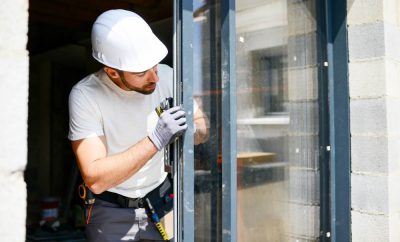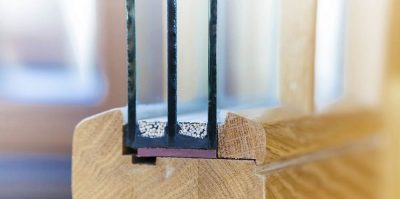- Oneflare /
- Cost Guides /
- Home Window Tinting

How much does Home Window Tinting cost?
$10 - $100 per m2
What's on this page
- How Much Does Window Tinting Cost?
- Different Types of Window Tinting Costs
- Benefits of Window Tinting
- Reasons to avoid DIY
- Factors Impacting Window Tint Costs
- How to Hire a Window Tinter
Read Related Window Tinting Articles
How Much Does Home Window Tinting Cost?
While many people have tinted car windows, they often don’t think about them for their home. Blocking the sun’s rays, however, is an excellent way to reduce the need for air conditioning and to protect your carpet and furniture from fading.
Since window sizes vary, you won’t find it priced by window. A typical price tag would be $50 or $60 per square metre. An additional $15 per square metre for labour is likely.
Costs in Australia
Window tinting prices vary by state and city, due primarily to labour costs. Urban areas may charge higher fees, but the number of competing companies could make it worth getting competitive quotes. On the other hand, rural homeowners may have to pay more to get an expert to come to their home
| State | Average Reported Window Tinting Costs |
| New South Wales | $50 per square metre |
| Victoria | $70 per square metre |
| Queensland | $50 per square metre |
Price Estimates for Different Types of Window Tinting
Home window tinting prices will depend on the type of tinting that is used, which is more than just budget vs premium tinting. You can get something simple for as little as $10 per square metre, but a more sophisticated product might cost $50 or more.
Reflective window film – This directs the sun’s rays away from the house, reducing the heat that enters a home. A mirror film might run $100 for a 1.5m by 10m roll.
Low emissivity film – Also known as low e window film, this material is designed to filter UV rays and provide better insulation. The house window tinting cost varies by brand.
Frosted window film – This is a great way to balance the need for natural light with the need for privacy. You might want it in the bathroom or on bedroom windows. This starts around $10 per square metre. You can compare that to $15 per square metre for embossed privacy film.
UV protective film – Although you might assume this would have a colour tint, it can also be clear. A tinted film might run $45 for a 1.2m by 2.4m roll.
Security film – This strengthens the glass, making it less likely to shatter. It adds an extra layer of security to your sliding glass doors and other windows that thieves might try to break.
Ceramic window tint – Although you can expect to pay the most for ceramic film, it is one of the best. It doesn’t interfere with cell phone reception or alters your view of the outdoors. Providing meaningful insulation, it blocks out 99% of ultraviolet light and up to 80% of infrared light. The material even strengthens the glass.
Benefits of Window Tinting
People choose window tinting to provide privacy, reduce harmful UV light, minimise the glare, to improve insulation, and to strengthen the glass.
Privacy – Tinted windows may allow you to have privacy without closing the blinds or curtains. Homeowners and business owners find this useful, especially in crowded urban settings.
More protection from heat and UV rays – With the harsh Australian sun, the right tint can block UV rays, keeping it from fading the colours in your home.
Noise – If you choose acoustic laminate, this aid to blocking outside noise. It’s an excellent way to soundproof your home or business.
Save on air conditioning costs – With the heat blocked, you won’t need as much air conditioning during the day, which should lower your electric bill.
Reasons to avoid DIY
While it may be tempting to add window tinting yourself, the process is much more specialised than you may think. Without prior experience, you can be left with bubbles in your tint. Even worse, you may need it professionally scraped and then reapplied.
Factors Impacting the Cost of Window Tinting
There are many factors at play with window tinting cost. As far as the house itself, the prices will be affected by the number of windows, window sizes and shapes, accessibility and the possible need for old tint removal. The cost per window will be affected by the type of film. Another consideration is the film’s rating for visible light transmission.
Type of film – A simple protective film may reduce glare or provide privacy, but you will pay more for low emissions, durable UV and infrared ray protection, and security. You may need different qualities for different windows. A bathroom may need privacy while a bay window may demand the best-infrared protection you can get.
Size and number of windows – As you consider tinting, consider how many windows your home has and what size they are. A one-storey home with 20 standard windows will cost less than a two-storey house with 20 windows of varying sizes.
Accessibility – A multi-storey home is likely to increase your costs because it makes working on the windows more difficult. When scaffolding is involved, the price goes up.
Visible Light Transmission (VLT) – In the case of VLT, less is better. You want a rating of 10% or 20%, which indicates that 80% to 90% of the sun’s harmful rays are shut out. As the numbers go lower, privacy increases as well. A smaller number also means more insulation and reflectivity.
Removal of old tint – Window tint removal cost will add considerably to the bottom line. It takes much longer to remove old tint than to simply clean and prep your windows for new tint.
The shape of windows – Squares and rectangles are more straightforward to cut than arcs and circles. Huge windows, multi-pane windows, or louvred windows may require more labour to ensure precision cuts.
Home window tinting vs car window tinting – Home window tinting is often less complicated than car window tinting since it’s a flat surface. You can’t look at car window tinting cost to determine home window tinting costs. Home windows are flat, unlike the curved surfaces of car windows.
How to Hire a Window Tinter
Licencing and Qualifications
Window tinters don’t need to have specialised licences, but you may want to find out what certifications they do have. For your peace of mind, they should have a business licence and possibly a contractor’s licence.
How to Create An Accurate Estimate
- Decide which films you want to compare
- Make a rough estimate of square metres based on your windows
- Make a list of any unusual aspects of your home or window, for example, multi-storey house or bay windows
- Get at least three quotes from credible window tinters
- Get quotes based on different film types
- Check references
- Ask for a Business licence or Contractor’s licence
How to Save When Hiring a Window Tinter
- When paying for window tinting, don’t assume that cleaning or tint removal is included. Make sure you ask for these items to be specified in any contract.
- Don’t assume you need the same material for every window. Put your money toward the most important windows for optimal privacy, security or insulation.
* The cost data is based on Oneflare and third-party sources


